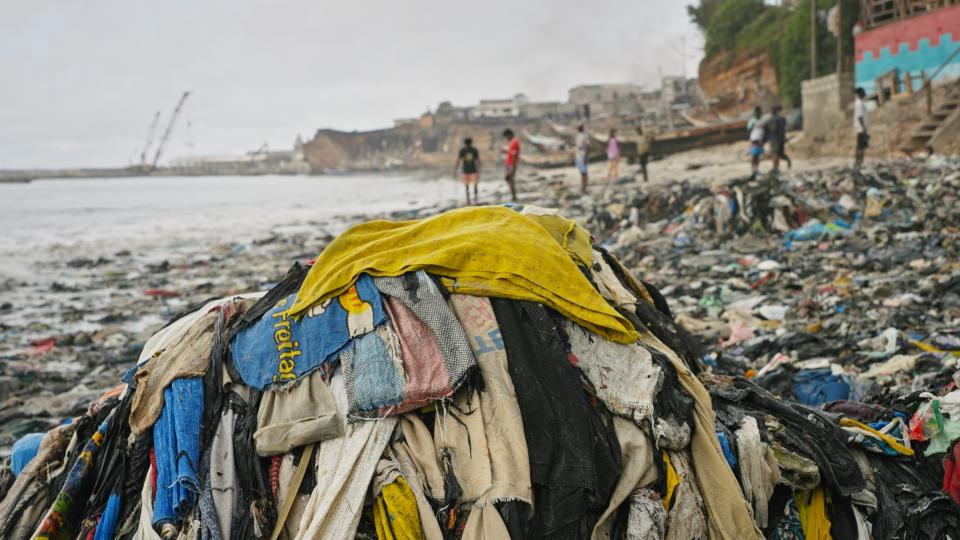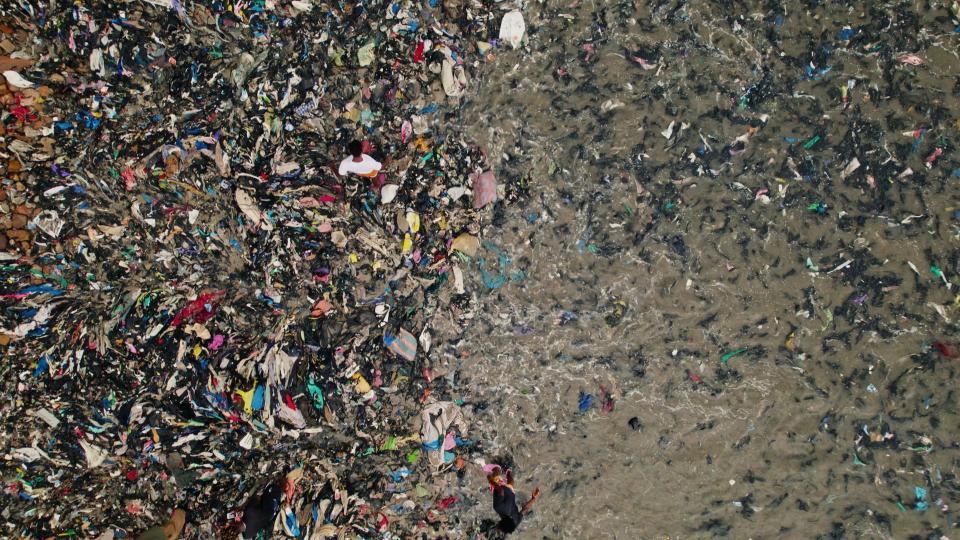‘Brandy Hellville & the Cult of Fast Fashion’ Director Eva Orner Talks Clothing Waste and Consumer Power
- Oops!Something went wrong.Please try again later.

PARIS — It might seem an unusual fit that Australian director Eva Orner, who took home an Oscar for her exposé of the U.S.’ interrogation practices during the Afghanistan war, would turn her lens to the fashion industry.
In the new documentary “Brandy Hellville & the Cult of Fast Fashion,” Orner investigates the toxic management culture of the popular teen and tween brand Brandy Melville and takes a deeper look at fast fashion’s supply chain and the waste it creates.
More from WWD
P448 Enters Joint Venture With The Camp Brands for European Wholesale Distribution and Retail Stores
Orner, a self-professed fashion lover, had long been looking for a way to examine the apparel industry in documentary form.
Working with producers Jonathan and Simon Chinn of “Searching for Sugarman” fame, they uncovered the story of Brandy Melville and its workplace culture following an exposé by Business Insider’s Kate Taylor, which shed light on a series of discriminatory hiring practices and predatory management.
In the film, the company’s toxic culture goes beyond how it treated employees and extends to the larger problem of clothing becoming disposable.
The Italian brand first launched in the 1980s but took off when it opened in Los Angeles in 2009. It was built on a succession of platforms — first Tumblr, then Instagram, and now TikTok — and captured the zeitgeist of the selfie-loving culture that came up around social media.
Orner sees the social media role as a major factor not only in the Brandy Melville brand’s success, but the disposal of clothing once it has already appeared as OOTD in someone’s feed.
“This story is very rooted in social media. But the joke’s on the customer, they make videos advertising for brands. And the companies are laughing all the way to the bank. Social media is really empowering and interesting to a degree, but I think it’s also incredibly damaging,” she told WWD.
The documentary delves into claims of how top executives would ask young employees for revealing photos to be sent to them daily, amongst other predatory behavior. Employees were instructed to fire workers who were overweight or of color; Black employees were allegedly relegated to the stock room. Chief executive officer Stephan Marsan allegedly would hang out in stores to identify girls and teens he wanted hired and photographed.
She also points out that the majority of the workers in the fashion industry are women, but they don’t reap the financial, big business benefits.
“It’s women that are the main people that work in the fashion industry,” Orner said. “And its exploitation from the people who work in the fields growing cotton, through to the women who are predominantly the workers, through to the people who work on the shop floor, to the customers, and the models, and everyone along the way. And it’s just this series of women being exploited, most often not always, but most often by white men who own the companies who are super wealthy,” she said.

She also followed the brand’s own supply chain, made in sweatshops in Italy and China, and travels to Ghana’s Kantamanto Market and the nearby beaches where piles of clothing have washed up, creating mountains of waste.
Making the film, one of the most visceral moments happened when Orner and her crew came across the beaches miles away from the Kantamanto Market. It was night, and under the moonlight they could still see the mountains of clothing.
“When we went there, you know, me and my team, we’ve shot in war zones, and we’ve done a lot of tough stories and seen a lot of horrible parts of humanity. We’re on that beach in Ghana, and it was horrendous. There are really no words. When I think about it, I still get chills, it was so shocking to see our waste just polluting their country.
“Everyone sees the images of the beaches and is just stunned. That’s what I really wanted to capture because it’s one of the lasting images of the film that is sort of burnt on your brain,” she said of the impact.
In the film, Orner speaks with former fashion designer Liz Ricketts, who now operates The Or Foundation in Ghana. The group advocates for globally accountable extended producer responsibility, as well as new frameworks for the fashion industry to take care of its waste.
Orner hopes the audience can understand that the good intentions of donating clothes still sees them often ending up dumped in these countries, and she reiterates that the waste stream follows old colonial lines. “Our penance is now sending them all of our trash, so that they’re drowning in our old clothes,” she said.
The secondhand market there started as a way to repurpose clothes, but now much of the clothes are low-quality fast fashion that cannot be reused, and the majority is now fossil fuel-based synthetics, such as polyester, that doesn’t biodegrade and breaks down into polluting microfibers.
The trailer went viral on TikTok ahead of the film’s release on streamer Max, with about 2.8 million views. Orner hopes that the film will reach the brand’s target audience, as well as inspire other former employees to share their stories.
Orner acknowledges the first exposé didn’t hit the bottom line; analysts estimate Brandy Melville crossed $332 million in revenues in 2023, and it has continued its global expansion with outposts in countries including Australia and China. Plus ultra-fast fashion companies with even cheaper goods like Shein have stepped in. That company just crossed the $2 billion mark in profits as it seeks an IPO.
Orner hopes the film will inspire change. “I think we’re at a tipping point. A lot of young girls, like all the young women in the film — who are my absolute heroes for speaking out and being whistleblowers and being so brave — none of them are into buying fast fashion anymore,” she said.
Orner noted that the last line of the film is “We need to buy less” writ large on the screen, and says consumers have the power in their hands.
“You will destroy these companies if the buying goes down 20 or 30 percent. It will have a huge impact,” she said. “People think they’re powerless but they’re not.”

Best of WWD

